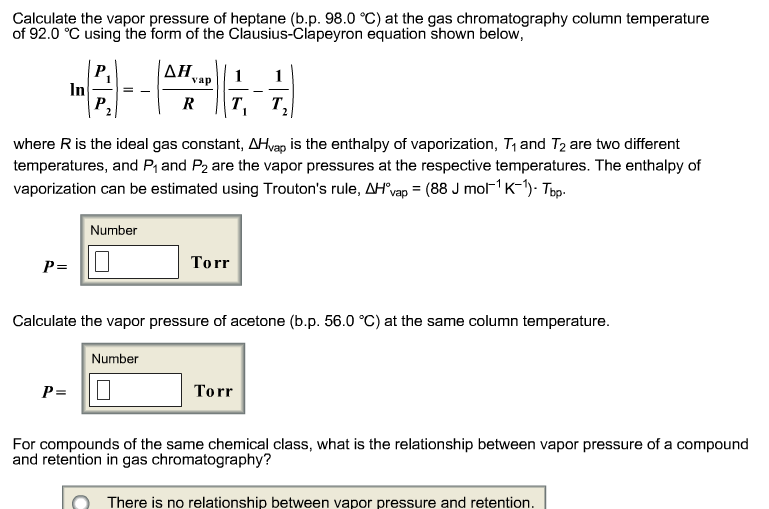
I don't recommend that you remember the ideal gas equation in this form, but you must be confident that you can convert it into this form.Ī value for R will be given you if you need it, or you can look it up in a data source. You will most often use the ideal gas equation by first making the substitution to give: You already know that you work it out by dividing the mass in grams by the mass of one mole in grams. This is easy, of course - it is just a number. So it is usually fairly obvious if you have done something wrong, and you can check back again.

If you get this wrong, you are going to end up with a silly answer, out by a factor of a thousand or a million. Similarly, if you are working out a volume using the equation, remember to covert the answer in cubic metres into dm 3 or cm 3 if you need to - this time by multiplying by a 1000 or a million.

You would have to divide a volume in dm 3 by 1000, or in cm 3 by a million. So if you are inserting values of volume into the equation, you first have to convert them into cubic metres. That's because the SI unit of volume is the cubic metre, m 3 - not cm 3 or dm 3. This is the most likely place for you to go wrong when you use this equation. Should you want to convert from other pressure measurements: You must make that conversion before you use the ideal gas equation. These mean exactly the same thing.īe careful if you are given pressures in kPa (kilopascals). Pressure is measured in pascals, Pa - sometimes expressed as newtons per square metre, N m -2. I am assuming below that you are working in strict SI units (as you will be if you are doing a UK-based exam, for example). The problems lie almost entirely in the units. On the whole, this is an easy equation to remember and use. The volume occupied by the molecules themselves is entirely negligible relative to the volume of the container. There are no (or entirely negligible) intermolecular forces between the gas molecules. The temperature of the gas is proportional to the average kinetic energy of the molecules.Īnd then two absolutely key assumptions, because these are the two most important ways in which real gases differ from ideal gases: (That means that there is no loss of kinetic energy during the collision.) Pressure is due to collisions between the molecules and the walls of the container.Īll collisions, both between the molecules themselves, and between the molecules and the walls of the container, are perfectly elastic. Gases are made up of molecules which are in constant random motion in straight lines. Real gases are dealt with in more detail on another page. There is no such thing as an ideal gas, of course, but many gases behave approximately as if they were ideal at ordinary working temperatures and pressures. Kinetic Theory assumptions about ideal gases This is intended only as an introduction suitable for chemistry students at about UK A level standard (for 16 - 18 year olds), and so there is no attempt to derive the ideal gas law using physics-style calculations. This page looks at the assumptions which are made in the Kinetic Theory about ideal gases, and takes an introductory look at the Ideal Gas Law: pV = nRT. So, to convert directly from bar to pounds per square inch, you multiply by 14.503774.Ideal gases and the ideal gas law: pV = nRT Or, you can find the single factor you need by dividing the A factor by the B factor.įor example, to convert from bar to pounds per square inch you would multiply by 100000 then divide by 6894.757. To convert among any units in the left column, say from A to B, you can multiply by the factor for A to convert A into Pascals then divide by the factor for B to convert out of Pascals. To convert from Pa into units in the left columnĭivide by the value in the right column or, multiply by the reciprocal, 1/x.ĥ00000 Pa / 100000 = 5 bar Multiply by the conversion value in the right column in the table below.ĥ bar * 100000 = 500000 Pa

To simply convert from any unit into pascals, for example, from 5 bar, just Where S is our starting value, C is our conversion factor, and
#PRESSURE CHEMISTRY CALCULATOR HOW TO#
How to Convert Units of PressureĬonversions are performed by using a conversion factor. By knowing the conversion factor, converting between units can become a simple multiplication problem: Some are obvious, such as pounds per square inch, but even the SI standard Pascal is actually an expression of one Newton per square meter. Since pressure is derived from force and area, many units for pressure directly relate force to area. Where P is equal to pressure, F is the normal force and A is area. Pressure is a scalar quality reflecting how force acts on a surface.


 0 kommentar(er)
0 kommentar(er)
